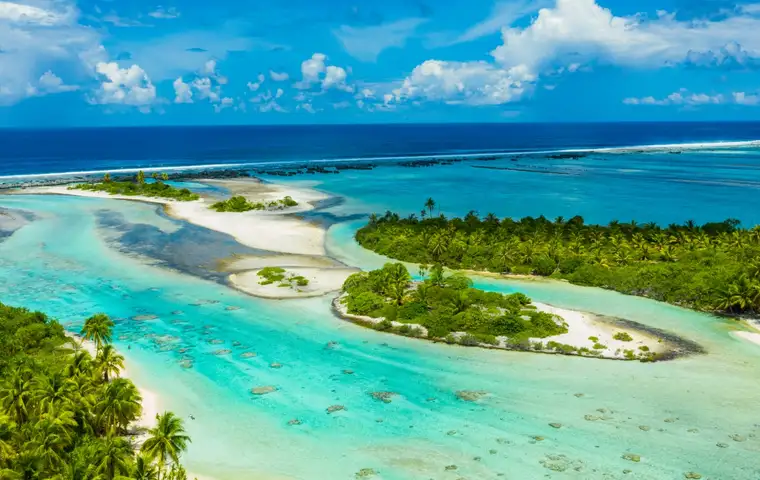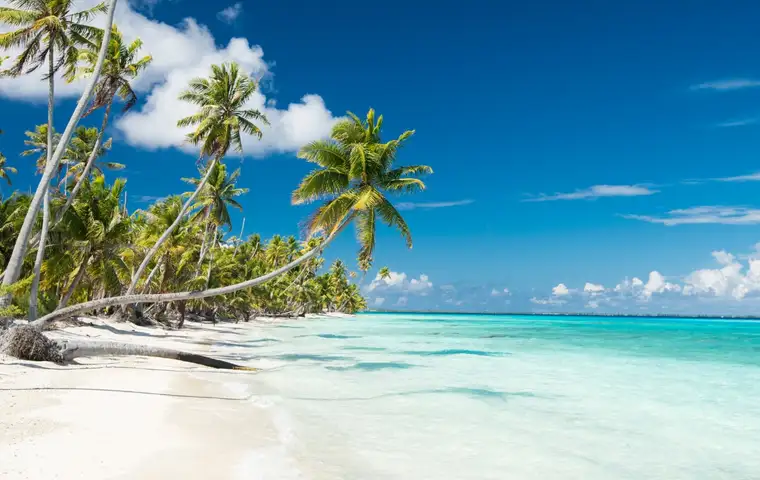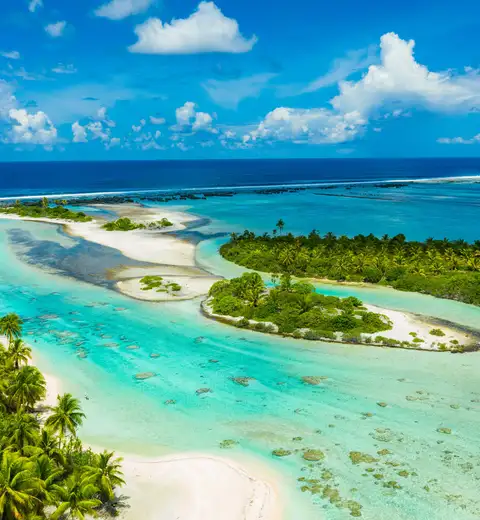
Guide to the most beautiful destinations, coasts and islands in French Polynesia
French Polynesia, one of the most remote places in the world, will captivate you with its beautiful nature, fascinating underwater world and local culture. It will satisfy everything you could wish for in an exotic boating vacation.
French Polynesia consists of several archipelagos in the heart of the Pacific Ocean. Its beauty and unique charm make it a popular destination for boaters and nature lovers. A cruise by sailboat or even better aboard a catamaran in Polynesia is unforgettable; peace and tranquility are the key words for a vacation in this dream land. The islands and atolls are at their best when viewed from the sea, offering stunning views and remote corners all to explore. Cruises are also a great way to visit multiple islands without the stress of changing accommodations.
Sail between the Windward and Leeward Islands or cruise the Gambiers archipelago, whichever you choose, if you charter a boat in Polynesia you can enjoy its magnificent beaches and picture-postcard landscapes. Moreover, thanks to the intimate and informal atmosphere of life on board you will be able to breathe a rare feeling of freedom.
The best time of year
Typical weather conditions in French Polynesia are tropical year-round. As a result, it is possible to visit in any season depending on the destination archipelago.
The best time to visit the Society Islands and Tuamotu is from June to September, while for the Marquesas Islands it is from August to November. For the Austral Islands there is no preferred season, because the hot and muggy austral summer, with heavy rains and some risk of storms and tropical cyclones, is followed by a somewhat cool and windy austral winter in the southernmost islands.
Sailing and catamaran holidays
The exotic paradise that leaves you breathless
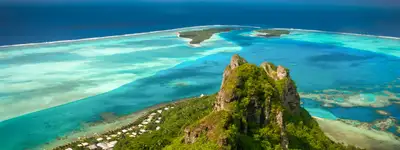
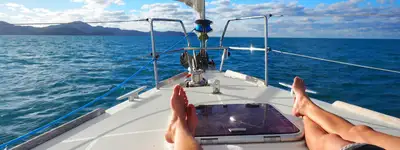


17+
Show all
Travel Ideas
French Polynesia is a remote paradise located on the other side of the world, ideal for experiencing a relaxing vacation. A constellation of inhabited and uninhabited islands and atolls to explore like Robinson Crusoes, without sacrificing the comforts found aboard comfortable catamarans.
Sustainable tourism
Polynesia's marine ecosystem is home to more than 20 species of sharks and an exceptionally healthy coral reef system that includes 176 species of coral and more than 1,000 species of fish, including some found nowhere else. What from above looks like an endless blue expanse, in reality turns out to be a vibrant ecosystem.
Perfect for
This destination is undoubtedly perfect for a romantic couple's vacation or the much-dreamed of honeymoon. The calm sea around the islands and the crystal-clear water rich in fish and coral also makes the destination suitable for family trips. The tranquility among these islands, on the other hand, is less suitable for those seeking a fun-filled, nightlife experience.
First time on a boat
The extremely calm waters surrounding the Polynesian islands make them navigable even by those with no sailing experience. You can rely on local and non-local skippers who will know how to lead you to discover this paradise in complete safety. There are few marinas but you can find several anchorage points and buoys to stop at.
The best exotic destinations for a Catamaran cruise
7 must-do activities during your sailing vacation in French Polynesia
Visit Anapa Pearl Farm to discover the pearl seekers, marine reserve and coral garden. You can moor here, explore the lagoon and hike into the rainforest to look for the Tiare Apetahi, a very rare flower.
Snorkel in Taha'a, the coral garden. Here you can spot an amazing variety of corals, sea anemones, fish, octopuses and stingrays.
Explore the Aoppomau River aboard the SUP. A tropical jungle where the only sound you will hear is birdsong.
Moor at Bora Bora Yacht Club's Bloody Mary's and meet the many VIPs who frequent this venue.
Visit Moorea and try your hand at various water sports, such as canoe trips, water skiing, kite boarding and snorkeling to see small sharks and sea turtles.
Make a stop at Huahine, the most authentic Polynesian island not yet reached by modernity. Characterized by pristine landscapes, white beaches and land planted with melons, bananas and vanilla.
Spot the hammerhead shark in the waters of Rangiroa, the largest atoll in the Tuamotu Islands group.
The archipelagos of French Polynesia
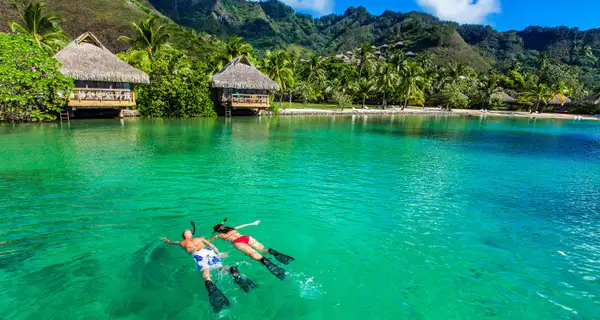
Society Islands
This is the country's main archipelago and includes the Windward Islands (including Tahiti and Moorea) and the Leeward Islands (including Raiatea, Bora Bora, and Taha'a). These islands owe their beauty to the perfect harmony between deep, verdant valleys of tropical vegetation, 2,000-meter peaks that are the remains of once-active volcanoes, and bays of the whitest sand contrasting with a celestial sea. Tahiti is the heart of French Polynesia; in addition to being the gateway, it is home to the capital city of Papeete. It is among the most vibrant islands where you can breathe deeply of the local culture. Sailing on the western side you will see white beaches, while on the eastern side you will see black beaches and volcanic craters.
Second to Tahiti in importance is Bora Bora, the pearl of the Pacific. A small paradise consisting of volcanic peaks overlooking colorful lagoons. A hike to Mount Otemanu, the island's gentle giant, is not to be missed.
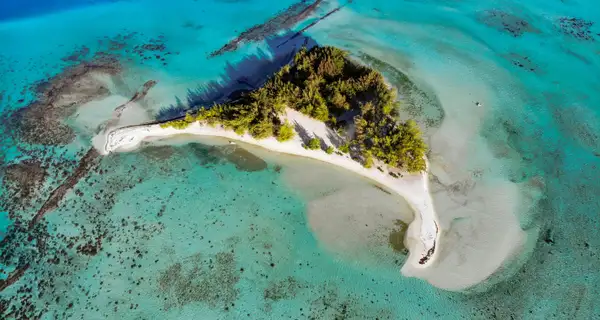
Tuamotu Islands
Tuamotu means "many islands," and indeed this archipelago has a plethora of them over more than 2,000 square kilometers. Some atolls are simple white beaches with a few acres of coconut palms, others are a bit larger (such as Rangiroa), peculiarly shaped (such as Manihi, the elliptical-shaped island), strikingly colored (such as Tikehau), and still others have been named a UNESCO World Heritage Site, such as Fakarava, a biosphere reserve. This archipelago is the birthplace of the legendary black pearl that grows inside a particular species of oyster.
Rangiroa is the largest atoll in Polynesia and its name means "immense sky." It consists of 240 motu (small sandy islets) separated by more than 100 hoa (small channels). The reef length here is well over 200 kilometers.

Gambier Islands
The smallest and most isolated archipelago, located north of the Tropic of Capricorn, can be seen as a continuation of the Tuamotu archipelago. The main island is Mangareva where Mount Duff and Mokoto, the highest points of the archipelago, are located. The scenery is enchanting and offers a mix of different Polynesian landscapes: bright motu, magnificent white sand beaches, wonderful bays and coves, and pearl farms. A stunningly colored lagoon contains the entire archipelago and offers a heavenly perspective.
The climate here is tropical, and only July and August are cool thanks to the ocean trade winds.
The other best-known islands in the Gambier Archipelago are: Akamaru, Aukena, and Taravai, which are difficult to reach by public transfers but easy to visit with your own catamaran or sailboat.
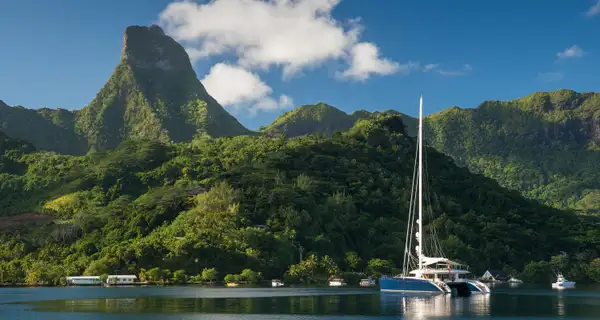
Marquesas Islands
About 1,500 kilometers away from Tahiti, the Marquesas Islands are located near the Equator, in the far north of French Polynesia. Here nature is the undisputed star. These islands are extremely mountainous and wild. In fact, the presence of man is limited to a few groups of people who reside permanently on only a few of these islands; only half of the islands are inhabited. The common characteristic of these islands is that they have rugged, current-swept coastlines and are dotted with many natural bays.
This archipelago is the most vibrant corner of culture in all of Polynesia; ancient rituals are still performed here and it is where the sacred art of tattooing originated and is still widespread today.
Don't miss the Hakaui Valley, one of the island's main attractions, with its spectacular Vaipo Falls.

Austral Islands
These are the islands located furthest south, below the Tropic of Capricorn. The fact that they are so off-center and untouched by tourism has allowed them to maintain a certain level of authenticity, as well as a cooler climate. Particular villages composed of coral stone dwellings can be found on these islands. They are considered a hotspot for whales; sailing in this area between June and October it is easy to encounter them.
Among the islands in this archipelago, there is the very small Rimatara, which is almost completely surrounded by coral reefs that make it difficult for boats to dock.
FAQ
Guides & tips
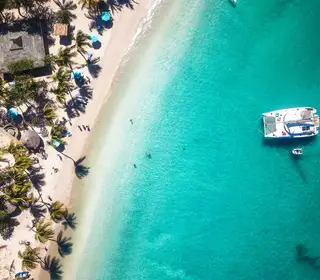
Where to travel
The Caribbean archipelago by sailboat
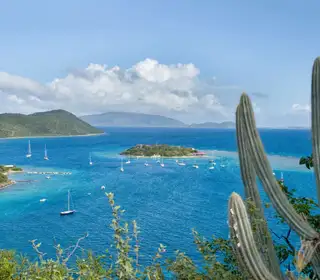
Where to travel
British Virgin Islands by catamaran
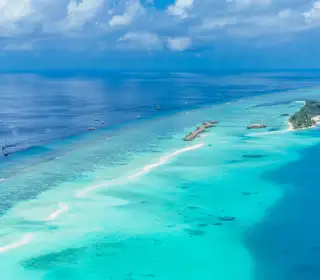
Where to travel
The Indian Ocean by Sailboat or catamaran
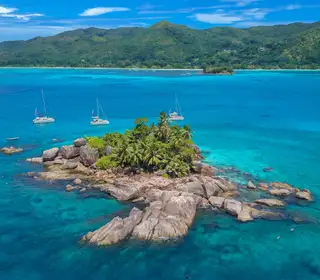
Where to travel
Seychelles by sailboat or catamaran
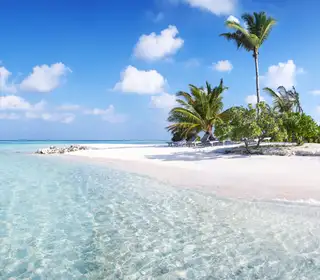
Where to travel
Maldives by catamaran
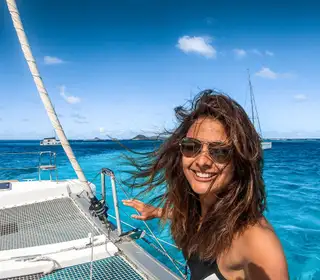
When to travel
When to go on a catamaran cruise in the Caribbean
Let's talk Sailsquare!



Secure payments



© 2025 Sailsquare Srl SB • All rights reserved - VAT IT07860990964
